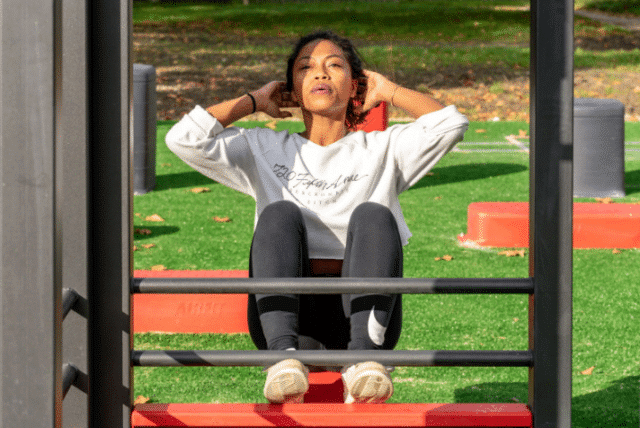A recent article from the Washington Post highlights that gut microbiome-exercise interplay. In the past, studies showed the essential role that our gut microbiome, the intricate ecosystem of microbes that live in our gastrointestinal tract, plays in maintaining our overall health.
These tiny bacteria perform crucial roles in maintaining our health, affecting all from our immune system to metabolism. However, did you know that microbes may affect our capacity to exercise?
Background
The association between the gut microbiome and exercising has been addressed by a recent study that was published in the Behavioural Processes Journal.
The investigation into how changes in the gut microbiota affect mice’s incentive to run on a treadmill was carried out by the study team, who were under the direction of Dr. MacNamara from the University of California.
The research group first selectively bred mice for voluntary exercise which liked treadmilling. Then, the research group administrated broad-spectrum antibiotics to a cohort of the selective mice breed.
What were the findings?
The study discovered that the mice’s levels of voluntary activity significantly decreased when they were administered antibiotics to alter their gut flora, which was significant in the selective breed of voluntary exercise mice. The voluntary exercise decrease was paralleled by a decrease in gut microbiome diversity.
On the other hand, inactive mice improved their running distance by 50% when the researchers transplanted gut bacteria from highly active mice into sedentary ones, which enhanced their motivation to exercise. But precisely how does the gut microbiota affect our desire to exercise?
The production of certain neurochemicals, such as dopamine, which has influence mood and behavior, is what it all comes down to, the researchers claim.
Both the gut and the brain secrete these neurotransmitters, and they communicate with one another via a sophisticated web of neurons, hormones, and immune cells.
The study suggested that dopamine decrease in antibiotic-treated mice may be relevant to voluntary activity decrease. Past research suggested high voluntary exercise mice breed illustrated higher levels of dopamine.
These results may have implications for human fitness and health. Despite the fact that the study was carried out on mice, the research suggests comparable processes might be in action in people. We might be able to create novel methods to encourage exercise and enhance general health by comprehending how gut microbiota controls physical activity.
Further Results
Another recent study profiled the 16S rRNA gut microbiome and metabolomes of elite skiers after competition season, and of a generally healthy population. In the athletes, there was less phylogenetic diversity and relative abundances of Akkermansia genera and other mucin-degrading gut microbial taxa were more prevalent.
The blood lipid profile of the athletes was better than that of the controls, and body mass index could only partially account for this difference. Butyricoccus genera correlated with cholesterol. Moreover, the athletic group had lower levels of the Ruminococcus torques group, which was also positively correlated with total cholesterol, VLDL, and LDL particles.
The study discovered that the known health-beneficial gut bacteria co-occurred with top athletes’ improved lipid profiles. These connections should be further investigated, as well as whether athletes are vulnerable to microbial alterations associated with mucin depletion throughout the competitive season.
Outcomes
To sum up, human studies suggest gut microbiome may shift energetic profiles and mice studies suggest gut microbiome may have implications for neurochemicals and effect voluntary exercise.
One way or the other, gut microbiome emerges to have a clear impact on exercising.
By comprehending this connection, we may be able to create novel methods for encouraging exercise and boosting overall health. For example, interventions involving dietary changes or probiotics might prove effective in increasing motivation.
We should further investigate the relationship between the gut microbiome and physical activity, as the results have implications for both athletes and the general population alike. With more research, we can understand how to use the gut microbiome to positively influence health and exercise.
The Future of Gut Microbiome Research
Gut microbiome research is an exciting field that continues to evolve every day. Scientists are using sophisticated techniques such as metagenomics, transcriptomics, metabolomics, and proteomics to identify correlations between the gut microbiome and health outcomes.
At CosmosID, our state-of-the-art microbiome sequencing services and bioinformatics services are enabling scientific breakthroughs that help us better understand the roles of bacteria in disease and health. We are committed to using technology to uncover new pathways for improving human health and wellness through microbiome research.
With continued advancements, we can harness the power of gut microbiota to make a healthier world.
Get started with the CosmosID-Hub today!
Want more like this? Sign-up to our newsletter to get the latest news from CosmosID:


